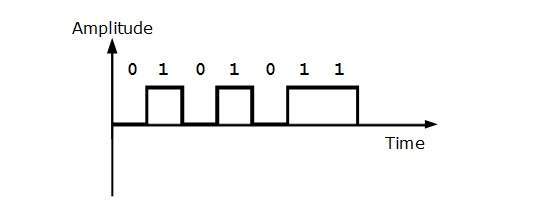Uni-polar Encoding
Unipolar encoding is a variant of the line code. A positive voltage in it represents a binary 1 , and the no voltage is represented from binary 0.

This kind of encoding use one kind of polarity that means positive voltage to represent binary 1 and the negative voltage to represent binary 0.
Unipolar line coding is a very basic method of encoding and is rarely used with most line encoding being either polar or bipolar or variations of these.

It also includes drwabacks like there is no self clocking into it , which is decreased by using the technique called as return-to-zero when the signal returns zero.
This is ideal if one symbol is sent much more often than the other and power considerations are necessary, and also makes the signal self-clocking.
NRZ(Non-Return-to-Zero) - Traditionally, a unipolar scheme was designed as a non-return-to-zero (NRZ) scheme, in which the positive voltage defines bit 1 and the negative voltage defines bit 0.
It is called NRZ because the signal does not return to zero at the middle of the bit. The normalized power (power required to send 1 bit per unit line resistance) is double that for polar NRZ.
For this reason, unipolar encoding is not normally used in data communications today.
0 Comment(s)